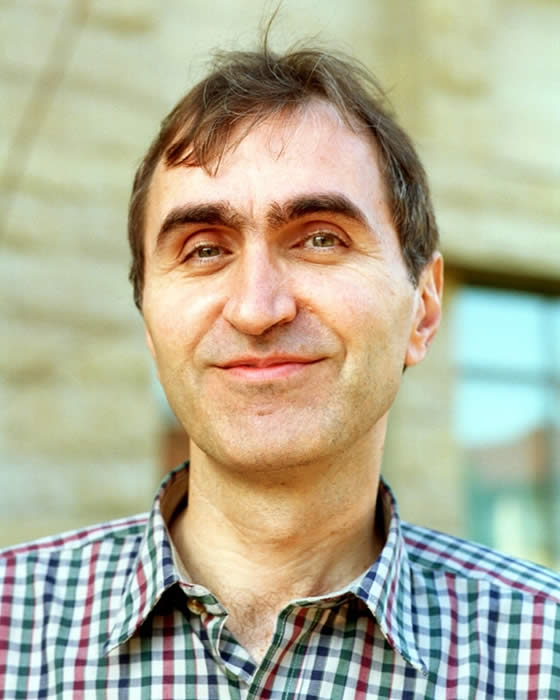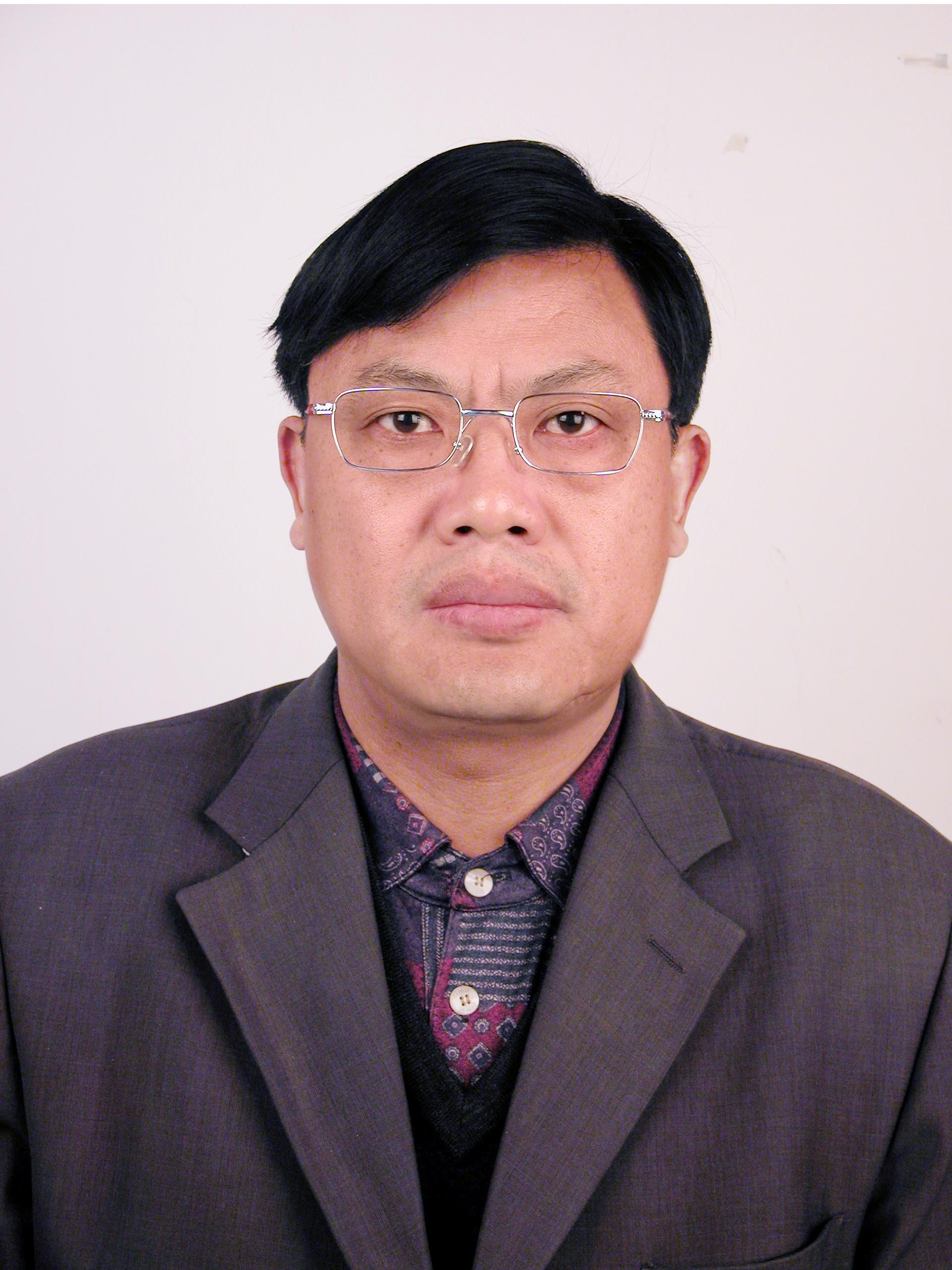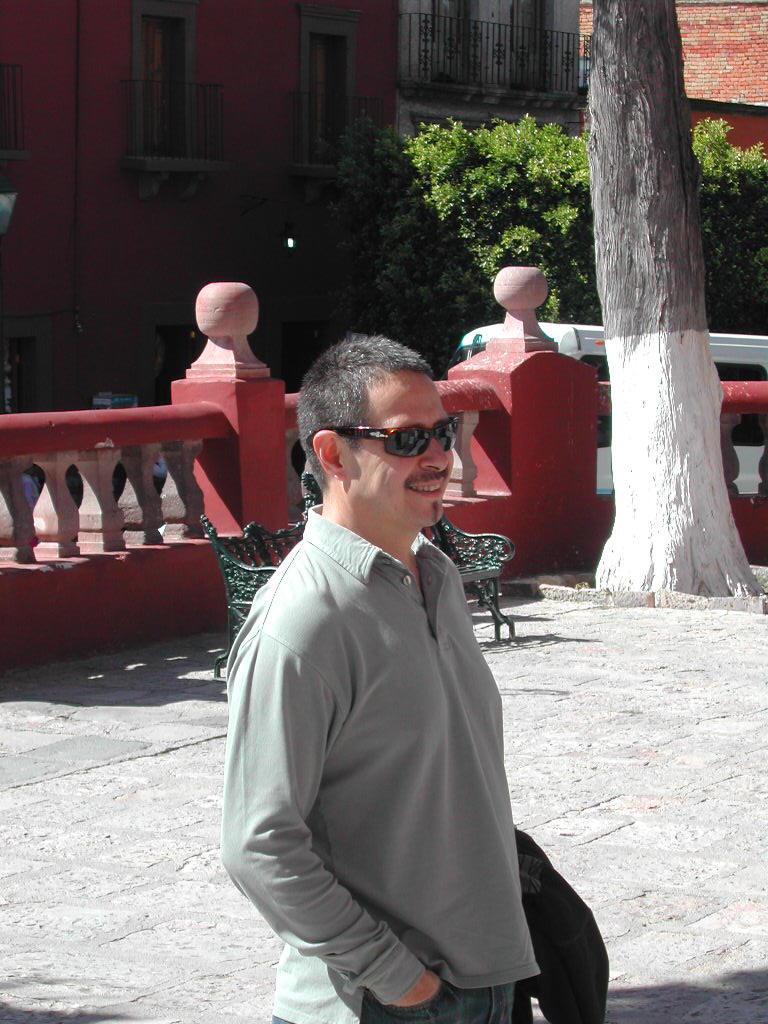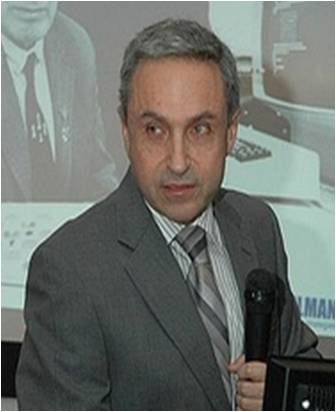Keynote Speakers

|
Witold Pedrycz
Deparment of Electrical and Computer Engineering, University of Alberta, Canada
|
Fuzzy modeling: fundamentals, design and challenges
Abstract
Fuzzy modeling and fuzzy models have emerged as a novel paradigm firmly dwelled on the principles of computing with information granules– fuzzy sets.
Over the past decades we have witnessed a truly remarkable progress in this area. We have arrived at a wealth of fuzzy models, their design patterns, and ensuing applications. The objective of this tutorial is to offer the audience a comprehensive exposure of the fundamentals, methodology and design practices of fuzzy modeling. We discuss motivating factors behind fuzzy models, bring forward the underlying algorithmic setup and offeer a critical assessment of existing development methods by clearly identifying their advantages and possible limitations. The tutorial is selfcontained. As far as prerequisites are concerned, it is anticipated that the audience is familiar with the essentials of fuzzy sets.
Biography
Witold Pedrycz received the M.Sc. And Ph.D.D.Sci. All from the Silesian University of Technology, Gliwice, Poland. He is a Professor and Canada Research Chair (CRC) in Computational Intelligence in the Department of Electrical and Computer Engineering, University fo Alberta, Edmonton, Canada. He is also with the Polish Academy of Sciences, Systems Research Institute, Warsaw, Poland. His research interest encompasses a broad spectrum of Computational Intelligence, fuzzy controllers, pattern recognition, knowledge-based neural netwoks, granular and relational computing, and Software Engineering. He has published numerous papers in these areas. He is also an autor of 12 research monographs. Witold Pedrycz has been a member of numerous program committees of IEEE conferences in this area of cybernetics, fuzzy sets and neurocomputing. He is a General Co-Chair of IEEE SMC 2009 hold in San Antonio, TX in October 2009.
He serves as Editor-in-Chief of IEEE Transactions on Sistems Man and Cybernetics-part A, Editor-in-Chief of Information Sciences, and Associate Editor of IEEE Transactions on Fuzzy Systems. Dr. Pedrycz is a recipient of the prestigious Norbert Wiener award from the IEEE Society of Systems, Man, and Cybernetics and an IEEE Canada Silver Medal in Computer Engineering.
|
 |
Hector Garcia-Molina
Professor, Departments of Computer Science and Electrical Engineering Stanford University |
CourseRank: A Social Site for Academic Course Planning and Evaluation
Abstract
CourseRank is a course planning tool we have developed for Stanford
students, and is in use by most undergraduates at Stanford.
In addition, CourseRank has been deployed at over 40 U.S. universities.
In this talk I will give an overview of CourseRank,
and some of the research that has gone into its recommendation engine,
its requirements checking engine, and its browsing interface.
Biography
Hector Garcia-Molina is the Leonard Bosack and Sandra Lerner Professor in the Departments of Computer Science and Electrical Engineering at Stanford University, Stanford, California. He was the chairman of the Computer Science Department from January 2001 to December 2004. From 1997 to 2001 he was a member of the President's Information Technology Advisory Committee (PITAC). From August 1994 to December 1997 he was the Director of the Computer Systems Laboratory at Stanford. From 1979 to 1991 he was on the faculty of the Computer Science Department at Princeton University, Princeton, New Jersey.
His research interests include distributed computing systems, digital libraries and database systems. He received a BS in electrical engineering from the Instituto Tecnológico de Monterrey, México, in 1974. From Stanford University, Stanford, California, he received in 1975 a MS in electrical engineering and a PhD in computer science in 1979.
He holds an honorary PhD from ETH Zurich (2007). Garcia-Molina is a Fellow of the Association for Computing Machinery (ACM) and of the American Academy of Arts and Sciences; is a member of the National Academy of Engineering; received the 1999 ACM SIGMOD Innovations Award; is a Venture Advisor for Onset Ventures, and is a member of the Board of Directors of Oracle.
In 1995 he worked with Sergey Brin (Google Co-Founder) on a project called "COpyright Protection System" or COPS, as part of Stanford University's Computer Science Department.
In 2007 García-Molina received an honorary doctorate from ETH Zurich for his outstanding work in computer science.
http://infolab.stanford.edu/people/hector.html
El Universal: El mexicano que asesoró a los creadores de Google
|
 |
Claudia Manfredi, Italy
Dept. of Electronics and Telecommunications
Faculty of Engineering
Università degli Studi di Firenze, Firenze, Italy |
| |
|
THE INTERDISCIPLINARY LABORATORY OF BIOMEDICAL ACOUSTICS – LIAB
The topics touched in the talk are: the LIAB aims, and the work in progress developed in this laboratory such as:
- DEVELOPMENT OF A NEW VOICE ANALYSIS TOOL – BIOVOICE: this is applicable to: 1) Newborn infant cry (F0>300Hz; F0>1000Hz in case of hyperfonation); 2) Adult’s singing voice (40Hz<F0<1300Hz, mostly with vibrato); 3) Adult’s dysphonic vocal sounds (/a/, /aiuole/) (50<F0<350 irregular, strong “noise”), etc.
- NON-INVASIVE MONITORING AND DETECTION OF OBSTRUCTIVE SLEEP APNEA EPISODES FROM FULL-NIGHT AUDIO RECORDINGS: Obstructive Sleep Apnoea (OSA) is a pathological condition where the upper airways collapse, reducing or cutting the flow to the mouth/nose. The diagnosis of OSAS is commonly obtained by means of Polysomnographic (PSG) examination, mainly performed in a clinical environment (sleep laboratories). Hence, efforts are made in the scientific community to define reliable OSA identification techniques from the audio signal only. In this work we focus on the automatic detection of sound events and their classification as actual snoring events vs. noise, including in the latter category both environmental noise and non-snore patient sounds (breathing, movements, etc).
- OBJECTIVE PARAMETERS EXTRACTION FROM HIGH-SPEED VIDEOKYMOGRAPHIC (VKG) IMAGES: To this aim, a new tool for measuring and tracking quantitative parameters from VKG images, has been developed, named VKG-Analyser. The new software tool aims at giving fast, reliable and reproducible measures. When applied to a large set of data, it would also allow defining reference values for normal and pathological cases, providing a valid support to diagnosis and surgical effectiveness evaluation.
- DEVELOPMENT OF A NEW TOOL FOR THE ANALYSIS OF SPECIAL CATEGORIES OF DEVIANT VOICES. THE CASE OF SPASMODIC DYSPHONIA: Spasmodic Dysphonia Analyzer (SDA) has been designed to help clinician with the diagnosis of a specific voice disorder named Spasmodic Dysphonia (SD), but can be applied to the analysis of a wider range of voice signals.
- DSP PROTOTYPE FOR VOICE QUALITY MONITORING DURING REHABILITATION/PHARMACOLOGICAL TREATMENT, OR AT WORK: Clinical interest: Daily phonatory load and instantaneous effects of voice (ab)use.
♦ Monitoring the status of the vocal folds for those patients who have undergone surgery or therapy, avoiding periodic controls giving-up.
♦ Applicable to patients with chronic dysphony due to their jobs (speakers, call centre operators, teachers etc.) Or of psychological origin (depression, stress).
♦ The possibility of making use of a simple and reliable self-monitoring tool, for non-expert users, with no restrictions on accessibility and logistics, will allow sensitising people on a still underestimated subject, such as the prevention of vocal apparatus pathologies.
http://asp.det.unifi.it/md/index.php?module=subjects&func=
viewpage&pageid=9
|
 |
De-Shuang Huang
De-Shuang Huang, Professor & Ph. D
Intelligent Computing Laboratory, Chinese Academy of Sciences, China |
Manifold Learning Based Feature Extraction Methods and Applications
Abstract
Manifold learning is an efficient dimensionality reduction method for nonlinear distributing data, which has been widely applied in many fields such as data visualization, image processing, information indexing, pattern recognition, and bioinformatics, etc. However, there still exist some problems with them, such as high demands on data sampling, the selection of the nearest neighbors, the robustness to noise and outliers, the estimation of the inherent features, etc. In this talk, two new manifold learning based methods, i.e. locally linear discriminant embedding (LLDE) and constrained maximum variance mapping (CMVM), are presented, which introduce the class information to supervise the feature extraction process. At last a generalized Fisher framework (GFF) is explored to unify the feature extraction methods mentioned above. Moreover, the traditional linear algorithms such as linear discriminant analysis (LDA) and principal component analysis (PCA), some manifold learning approaches can all be regarded as its special case. Finally, all the proposed algorithms have been tested by some artificial data and some benchmark data sets. The experiments have validated their efficiency.
Biography
De-Shuang Huang received the Ph.D degree in Institute of Electronic Engineering from Xidian University, Xian, China, in 1993. During 1993-1997 period he was a postdoctoral research fellow respectively in Beijing Institute of Technology and in National Key Laboratory of Pattern Recognition, Chinese Academy of Sciences, Beijing, China. In Sept, 2000, he joined the Institute of Intelligent Machines, Chinese Academy of Sciences as the Recipient of “Hundred Talents Program of CAS”. From Sept 2000 to Mar 2001, he worked as Research Associate in Hong Kong Polytechnic University. From Apr 2002 to Jun 2003, he worked as Research Fellow in City University of Hong Kong. From Aug. to Sept. 2003, he visited the George Washington University as visiting professor, Washington DC, USA. From Oct. to Dec. 2003, he worked as Research Fellow in Hong Kong Polytechnic University. From Jul to Dec 2004, he worked as the University Fellow in Hong Kong Baptist University, From Mar 2005 to Mar 2006, he worked as the Research Fellow in Chinese University of Hong Kong. From Mar 20 to Jul 20, 2006, he worked as visiting professor in Queen’s University of Belfast, UK. From Oct 26 to Nov 26, 2007, from Nov. 2 to Dec.2, 2008 and from Jun 29 to Jul 29, 2009, he visited Inha University of Korea as visiting professor.
Dr. Huang is currently a senior member of the IEEE, and associated editors of several main-stream international journals. He founded the International Conference on Intelligent Computing (ICIC) in 2005. ICIC has since been successfully held annually with him serving as General Chair in different cities of China and Korea. In addition, he is also the program committee members of several main-stream international conferences and the Program Chairman of several Chinese National Conferences.
He has published over 300 papers in well known international journals and conferences, including over 120 papers indexed by SCI. Also, in 1996, he published a book entitled “Systematic Theory of Neural Networks for Pattern Recognition”, which won the Second-Class Prize of the 8th Excellent High Technology Books of China, and in 2001 second book entitled “Intelligent Signal Processing Technique for High Resolution Radars”, and in 2009 third book entitled “The Study of Data Mining Methods for Gene Expression Profiles”. His research interests include Pattern Recognition, Biological and Artificial Neural Networks, Image Processing and Bioinformatics.
http://www.intelengine.cn/English/people/hds.htm
|
 |
Raúl Monroy
Computer Science Department
Tecnológico de Monterrey Campus Estado de México |
|
Some Encounters on the Productive Use of a Failed Proof Attempt or a Counterexample
Abstract
In the formal methods approach to software verification, we
use logical formulae to model both the program and its intended
specification, and, then, we apply (automated) reasoning techniques to
demonstrate that the formulae satisfy a verification conjecture. One may either
apply proving techniques, to provide a formal verification argument, or
disproving techniques, to falsify the verification conjecture. However,
programs often contain bugs or are flawed, and, so, the verification process
breaks down. Interpreting the failed proof attempt or the
counterexample, if any, is very valuable, since it potentially helps identifying the
program bug or flaw. Lakatos, in his book Proofs and Refutations, argues
that the analysis of a failed proof often holds the key for the development
of a theory. Proof analysis enables the strengthening of naïve conjectures
and concepts, without severely weakening its content. In this talk, we
survey our encounters on the productive use of failure in the context of a
few theories, natural numbers and (higher-order) lists, and in the context
of security protocols.
Biography
Raúl Monroy obtained a PhD in Artificial Intelligence in 1998 from Edinburgh University, under the supervision of Prof. Alan Bundy. He has been in Computing at Tecnológico de Monterrey (ITESM), Campus Estado de México, since 1985. In 1992 he was promoted to Assistant Professor and in 2000 he was promoted to Associate Professor. Since 1998 he is a member of the CONACYT-SNI National Research System, level II. From 2006 to 2007, he was a visitor to both the University of Edinburgh and the DFKI, Saarbrücken, on his sabbatical leave.
Dr. Monroy's research focuses on automating the application of theorem proving to formal methods of system development. He is also interested in issues of computer security. Currently, his research concerns: the discovery an application of general search control strategies for uncovering and correcting errors in either a system or its specification; the discovery of novel methods for anomaly detection in computer security; and motion planning.
Dr. Monroy has held 6 research grants from several funding agencies, including CONACYT (holder), the national research council, BMBF (co-holder), DAAD, (co-holder), FRIDA (holder) and CONACyT-REDII (co-holder) and is the sole or joint author of over 30 published papers. He is programme co-chair for MICAI-2004, MICAI-2005 and MICAI-2009, and serves on the programme committee of various AI conferences. He has been Vice Presidente to the Mexican Society for Artificial Intelligence since 2008.
|
 |
Boris Stilman
Professor of Computer Science
University of Colorado Denver, USA &
Chairman & CEO STILMAN Advanced Strategies, USA |
|
Discovering Role of Linguistic Geometry (LG)
Abstract
In my keynote talk I will put LG in the historical prospective. At first I will go backward: from the modern advanced applications to the past achievements in computer chess and to the ancient warfare. Then, I will change direction. I will go forward by tracing the development of LG from predecessors of computer chess to experiments with program PIONEER, to major theoretical results and to modern applications of LG.
In my tutorial I will explain foundations of LG employing animated applications and introduce audience to the formal grammars of trajectories and zones. The rest of the tutorial will be devoted to the so-called no-search approach in LG, i.e., the major theoretical result showing that LG generates optimal solutions for a class of Abstract Board Games. The most active participants of the tutorial will receive DVDs with recorded demos and brochures.
Biography
Boris Stilman received MS in Mathematics from Moscow State University, USSR in 1972 and two Ph.Ds in Electrical Engineering and Computer Science from National Research Institute for Electrical engineering, Moscow, USSR in 1984. In 1972-1988, in Moscow, he was involved in the advanced research project PIONEER led by a former World Chess Champion Professor Mikhail Botvinnik. The goal of the project was to discover and formalize an approach utilized by the most advanced chess experts in solving chess problems almost without search. While program PIONEER has never played complete chess games, it solved a number of complex endgames and positions from the games of World Chess Champions. This project has never been finished, however, based on these experiences over a number of years, in Moscow, Dr. Stilman developed experimental and mathematical foundations of the new approach to search problems in Artificial Intelligence. In 1990-91, while at McGill University, Montreal, Canada, based on this approach, he originated Linguistic Geometry (LG), a new theory for solving abstract board games. LG allows us to overcome combinatorial explosion by changing the paradigm from search to construction. It is scalable to solving complex real world problems that are considered intractable by conventional approaches.
Since 1991, Dr. Stilman was developing the theory and applications of LG at the University of Colorado Denver (UC Denver). A leap in the development LG was made in 1999, when he (with a group of scientists and engineers) founded STILMAN Advanced Strategies, LLC (STILMAN). A growing number of applications of LG developed at STILMAN have passed comprehensive testing and are currently being transitioned to the real world command and control systems and already considered vital to the US national defense. Eleven years of highly successful application of LG, its unmatched scalability and accuracy, permit to conclude that LG is a lot more fundamental than simply yet another mathematical theory of efficient wargaming. Every LG application generated new ideas that experts evaluated as brilliant. It appears that LG is a mathematical model of human thinking about armed conflict, a mental reality that existed for thousands of years. The game of chess was invented 1.5-2 thousand years ago as a formal gaming model of ancient wars. In this case, chess served as a means for discovering human methodology of efficient warfare. The newest direction of research on LG is to prove this hypothesis by demonstrating power of LG on wars happened at times when the game of chess had yet to be invented. Soon, LG-based software will demonstrate what-if analysis of the battles on behalf of Alexander the Great and Julius Caesar.
Dr. Stilman published several books (including "Linguistic Geometry: From Search to Construction") and contributions to books, and over 200 research papers. He is a recipient of numerous R&D awards, including the top research awards at UC Denver, grants from the former USSR Academy of Sciences, substantial grants from the US government agencies such as major multiple awards from US Dept of Energy, DARPA, US Army, US Air Force, etc.; Ministry of Defence of UK; from the world leading contractors such as Boeing (USA), Rockwell (USA), BAE Systems (UK), Finmeccanica (Italy-UK) and Fujitsu (Japan). More information about Dr. Stilman, history of LG and projects can be found at www.stilman-strategies.com
http://www.stilman-strategies.com/bstilman/boris_papers/RESUME.pdf
|
|

